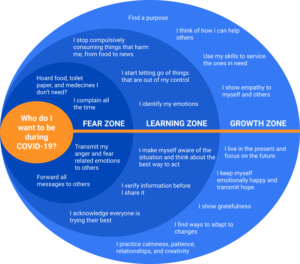How a non-tech professional can launch a tech business
Have you ever wanted to solve a big problem using technology but felt it wasn’t possible because you don’t have any technology skills? You’re not alone. My friend, Jennifer, had an idea for a technology business but never thought she’d be able to get it off the ground since she was an English Literature major and worked in sales for 25 years. She decided to plow ahead anyway. Stanford University entrepreneur business school coined the term “Fuzzy” to describe a person who lacks any kind of technology background founding a tech company. Fuzzy founders include Brian Chesky of Airbnb and Katelyn Gleason, the Founder of Eligible, who was a theater major before building a successful healthcare tech platform.
"It’s technology married with liberal arts, married with the humanities, that yields us the result that makes our heart sing” commented Author Scott Hartley of The Fuzzy and the Techie: Why the Liberal Arts Will Rule the Digital World. He explained, “Fuzzies are helping to bridge divides between specialties, making unexpected connections between problems and the technological means of addressing them and building the cross-functional teams required to pursue the most promising areas of innovation.”
More technology companies are realizing how critical it is to have people with a liberal arts background working in technology in order to develop automation and artificial intelligence through an ethical process. Companies such as HP have talked about being confronted by their liberal arts employees because of ethical or safety issues pertaining to the implications of using artificial intelligence. Many non-tech employees who work in ethics in AI for example have a background in either anthropology, psychology, or sociology. HP and other companies recognize that engineering employees should not be the only ones making impactful AI product decisions and often bring in employees who have a humanities background as well.
No Developer & “No Code” = No Problem
Even though you might need a developer to fully realize your product vision, you can still create a professional and interactive first draft of a technology idea without technology chops. By using what is called “no code” tools, there are several applications that allow you to build a tech product for lay people who are not developers. Jennifer took the initiative to ask her tech-savvy friends about productivity tools and figured out what she’d need in order to map out her idea. She learned how to use Slack, Trello, AirTable, and, ultimately, Figma to create a professional sketch to illustrate her idea. Each of these tools is free for a basic version. Whether they are used to create your own business or you want to ramp up your technology skills for your resume, learning a new tool is a great way to build your knowledge, skills, and relevance in a quickly changing market. Search online to find and watch the free tutorials available for the tools you need. Although she was reluctant at first, Jennifer quickly learned how easy many of them are to use. If she can do it, So can you.
| MORE ARTICLES
Emily’s vision for illume hire developed as part of her journey from a startup-curious sales and media professional to co-founder and CEO. Her passion is to provide resources to support professionals with 20+ years experience. Emily was part of the founding leadership team of Age Equity Alliance, a non-profit focused on the benefits of an intergenerational team.





